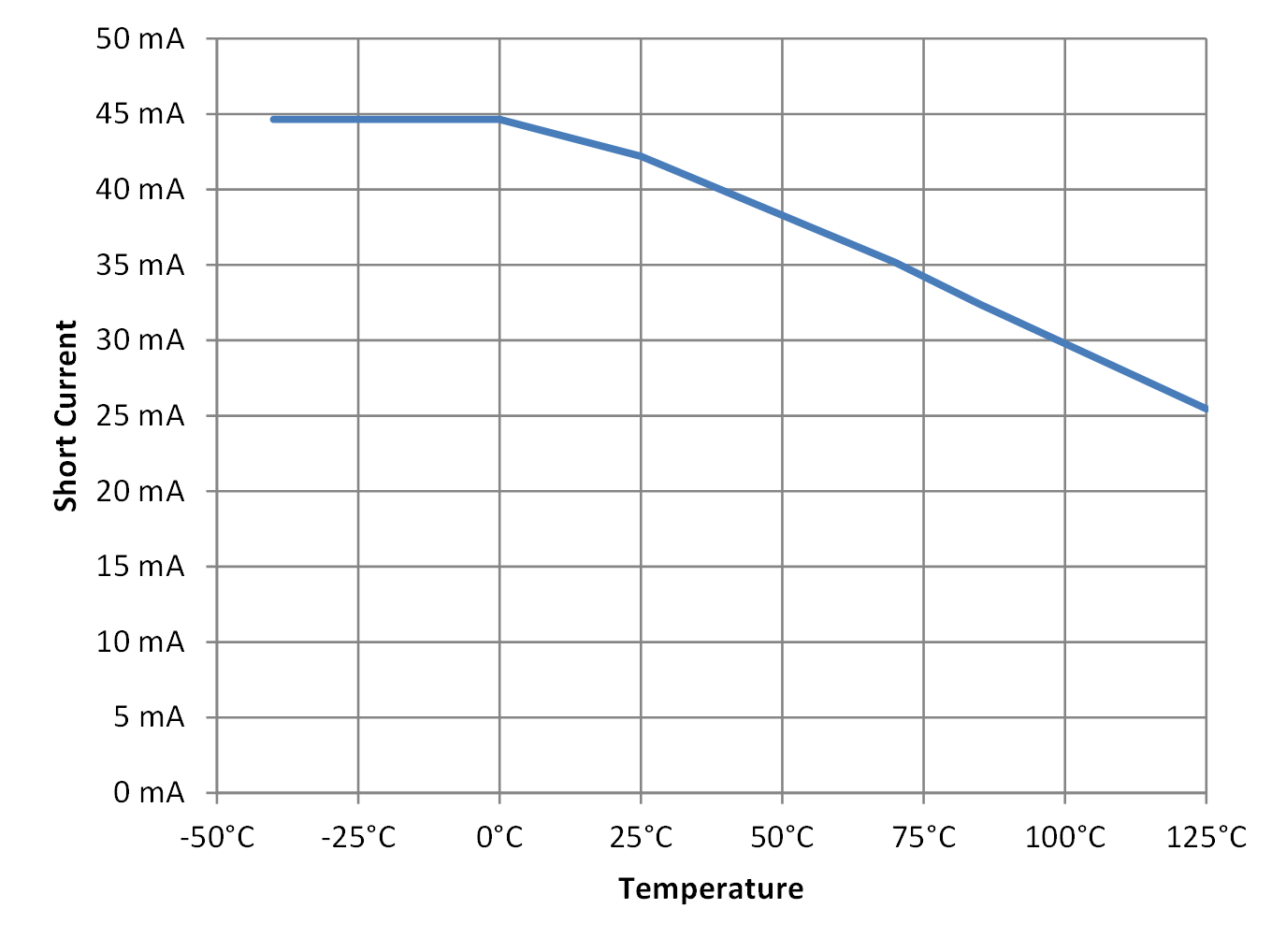SLOA277B january 2019 – july 2023 LM124 , LM124-N , LM124A , LM158 , LM158-N , LM158A , LM224 , LM224-N , LM224A , LM258 , LM258-N , LM258A , LM2902 , LM2902-N , LM2902-Q1 , LM2902K , LM2902KAV , LM2904 , LM2904-N , LM2904-Q1 , LM2904B , LM2904B-Q1 , LM2904BA , LM321 , LM324 , LM324-N , LM324A , LM358 , LM358-N , LM358A , LM358B , LM358BA , TS321 , TS321-Q1
3.4 Short Circuit Sourcing Current
The Darlington NPN driver has a current limiting circuit to protect against shorts to ground. The current limiting feature protects the device from immediate damage. However, device overheating can occur during prolonged shorts especially when the VCC – VOUT voltage is high. Note that power dissipation in the op amp is ((VCC – VOUT) × IOUT). The op amp sets IOUT and the application determines both the VCC value and the short voltage, VOUT , affecting the power dissipated. The op amp has no over-temperature shutdown circuitry. Therefore, excessive power dispassion can lead to very high die temperature. The data sheet absolute maximum ratings table only allows shorts to ground for VCC ≤ 15 V. The current limit magnitude, in Figure 3-6, decreases as die temperature increases.
 Figure 3-6 Plot Showing Short Circuit Current vs Junction Temperature
Figure 3-6 Plot Showing Short Circuit Current vs Junction Temperature